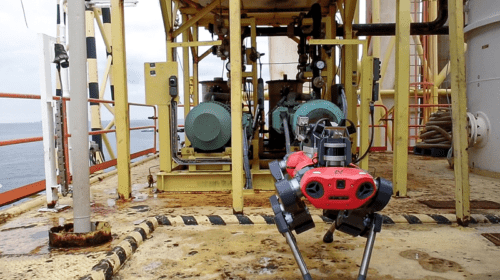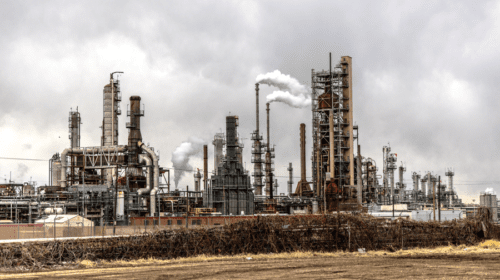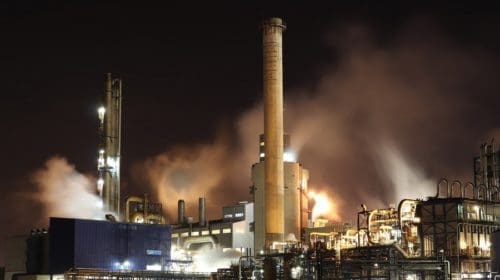The Internet of Things (IoT) is widely used in many industries, including the oil and gas sectors. Applying the technology in thoughtful, actionable ways can increase profits and safety while minimizing adverse events. For example, an oil IoT sensor on an offshore rig could make people aware of an issue before it becomes a severe occurrence that harms people and the environment.
The IoT in oil and gas is gaining momentum, although the industry was not among the earliest adopters. Here’s a look at how connected technology can help and how you might implement it in your work.
Improving Drilling Efforts with Oil Technology
Decision-makers in the oil industry continually look for effective ways to maximize the overall profitability of their drilling operations. That often means understanding as much as possible about a particular site before exploring its available resources.
A 2020 partnership between IBM and oil industry services company Schlumberger centers on using Industrial Internet of Things (IIoT) data to aggregate data across an entire assortment of devices and store the information in the cloud for later reference.
One example given while developing a proof-of-concept for the approach was that geophysicists could collect seismic data from a site before drilling. Then, they could analyze it to get a more accurate picture of where to begin exploring a well for best results.
Making Technicians More Aware of Faults
Adhering to a reactive maintenance plan in the oil and gas industry can become a costly decision, especially because it could cause expensive and prolonged outages while people deal with identified issues. However, using the IoT in oil and gas allows employees to know that problems exist before failures happen.
For example, adding a vibration sensor to an existing piece of equipment can alert people to leaks and other abnormalities. Plus, according to one statistic, 50%-80% of faults happen due to a lack of lubrication. Using an ultrasonic sensor to detect the applicable frequencies can pick up on instances of that matter.
This kind of retrofitting allows using backwards-compatible IoT sensors in various sectors, including oil and gas. Then, the overall investment to upgrade equipment is less than buying new.
Vikrant Viniak, a leader in Accenture North America’s high-tech strategy practice, explained why using the IoT for maintenance is such an appealing possibility. “Since maintenance is a huge expense for oil and gas companies, they are leveraging these industrial devices to make sure that they go from a regular maintenance where they have to shut everything down for the month to do all the maintenance to predictive maintenance to fixing things before they break.”
He continued, “This is not only reducing cost, it’s also improving efficiencies.” Suppose the data from a connected sensor shows a gradual drop in performance. Then, it could make people aware of a minor issue that could cause slowdowns and other undesirable effects if left unaddressed.
Determining When Oil Wells Could Become Unstable
Efforts to bring about oil IoT progress often complement other technologies, such as data analytics. In one instance, a company called Cognite used existing sensors and advanced fluid flow modeling to learn more about the probability of an oil well eventually becoming unstable.
Carolina Torres, the company’s senior director of energy industry transformation, discussed the Valhall oil field. She explained, “One of the issues that we have and that we’ve had in the Valhall field…You can think of it as a reservoir collapse. It’s a chalk reservoir, which is very unstable. And if you pull on it too hard or if anything changes in the subsurface, that chalk just collapses and comes into the wellbore and plugs everything up.”
She continued, “It’s very expensive to mitigate. Sometimes you lose the entire well and have to do a sidetrack or do something different. And so what we’ve been able to do is use data science to monitor the production itself and how the well is behaving in order to forecast or be able to predict when things might be becoming unstable downhole.”
Allowing Simultaneous Remote Monitoring
Many people overlook the world’s dependence on the oil and gas industry unless things go wrong that disrupt supply. Statistics indicate that an estimated 95 million barrels of oil get used daily around the globe. Keeping up with demand involves using specialized equipment at all stages of the process, whether extracting oil from the Earth or refining and distilling it to make gasoline.
Remote monitoring can help companies remain profitable because it gives decision-makers information to help them make proactive decisions. Using the IoT in oil and gas can reduce the costs associated with integrity monitoring, which helps ensure that equipment and infrastructure operate as expected without putting people and the environment at risk.
For example, one IoT-enabled solution on the market enables watching up to 250 wells within a 10-kilometer radius. Customers pay a flat rate for one sensor per well, plus a subscription fee. This business model allows companies to gradually scale up their usage of the IoT, which is a notable benefit when company leaders want to see a measurable return on investment before making major commitments to this technology.
Checking for Pipeline Damage
Exploring oil technology solutions involving the IoT can also pay off when professionals want to get warnings about damaged pipeline infrastructure. A recent research paper explained the possibilities of such a system. Although this tech is not widespread yet, it’s interesting to see what may be on the horizon.
The experiment involved five sensors on a test rig, with each one collecting data every 15 seconds. The goal was to detect pressure pulses, which get sent in both directions away from a damaged area. Analyzing the travel time of a pulse allowed the researchers to determine the location of a problem.
Plus, they had to take pressure measurements sampled at high frequency from various locations along the pipe. A sensor closest to the damaged area gave the highest-amplitude pulse and vice versa. The results showed only a 20-millimeter difference between what the sensors showed as the problematic location and where the issue actually occurred.
Keeping Workers Safe and Productive
Many roles in the oil and gas industry come with inherent risks. Workers receive training and use specialty gear to reduce the dangers. The Internet of Things could cut the threats even more, particularly if gadgets pick up things that humans don’t immediately notice.
For example, Marathon Petroleum uses an end-to-end gas detection system. Employees don wearable sensors that detect issues. Any alerts of problems get sent to a centralized system that tells managers the real-time location of those abnormalities and any employees working near them. An alarm also sounds near the affected workers, prompting them to head to the nearest evacuation point.
Wearable technology can also come in handy when a technician encounters a problem with a piece of equipment and needs advice from a more experienced person about how to handle it. Employees engaging in maintenance tasks for Shell use head-mounted wearables that let off-site experts see what those professionals do.
Then, people can advise how to solve an issue without being on-site, thanks to remote video calling technology. Implementing this technology made worker output go up, presumably because they felt more confident and well-equipped with assistance so accessible.
Using the IoT in Oil and Gas Helps Companies Succeed
These examples highlight why it makes good business sense for businesses in the oil and gas sectors to consider using the IoT to improve operations. Any substantial change requires time and effort to implement, but advanced technology can enhance visibility, boost profits, keep employers safer and more.
Emily Newton is the Editor-in-Chief of Revolutionized, an online magazine discussing the latest industry innovations and trends.
Oil and gas operations are commonly found in remote locations far from company headquarters. Now, it's possible to monitor pump operations, collate and analyze seismic data, and track employees around the world from almost anywhere. Whether employees are in the office or in the field, the internet and related applications enable a greater multidirectional flow of information – and control – than ever before.












